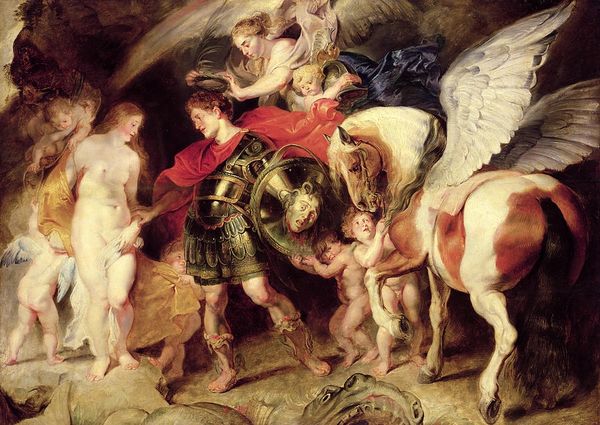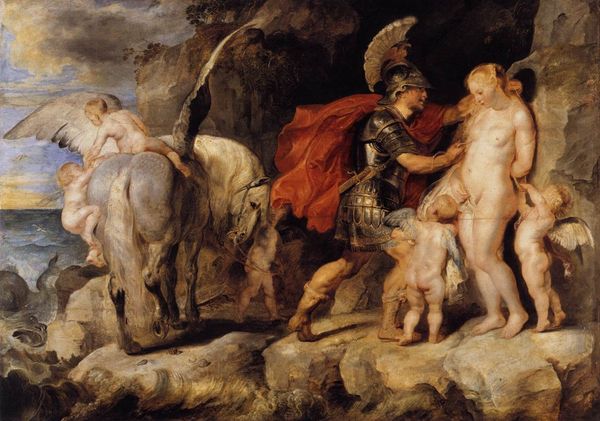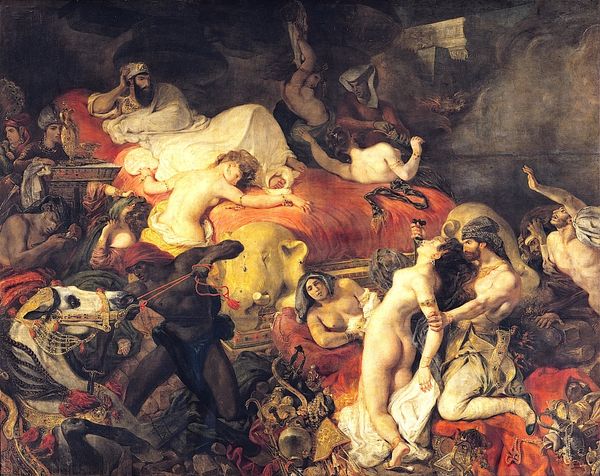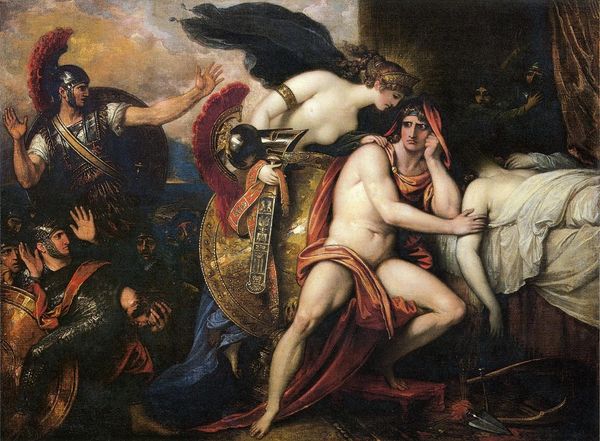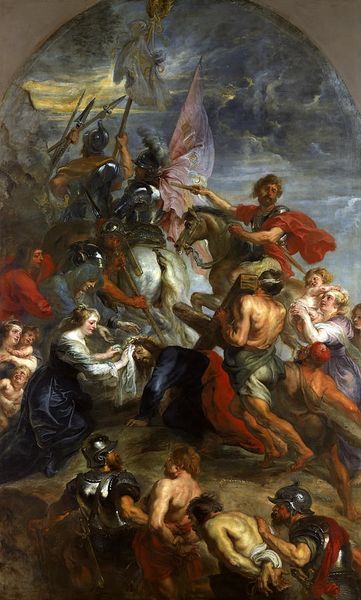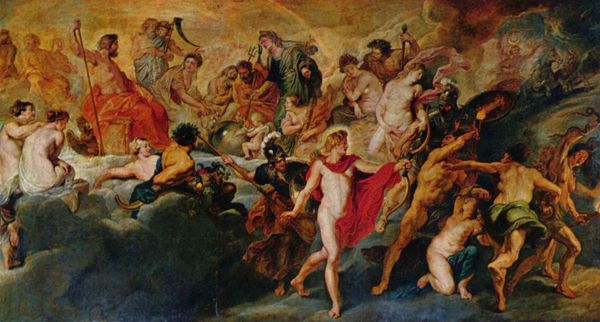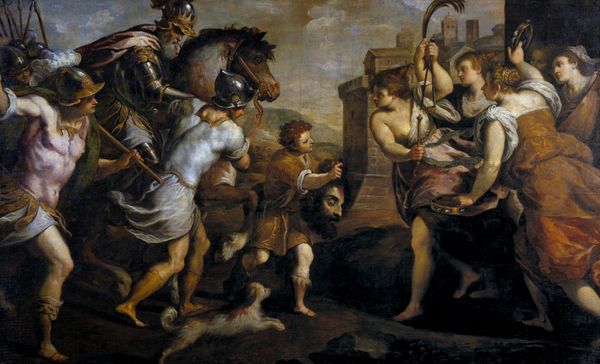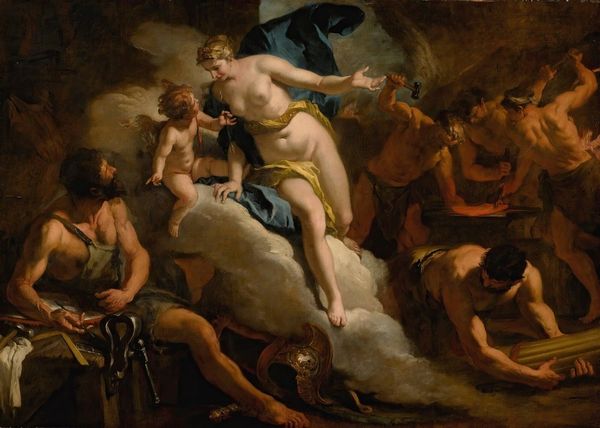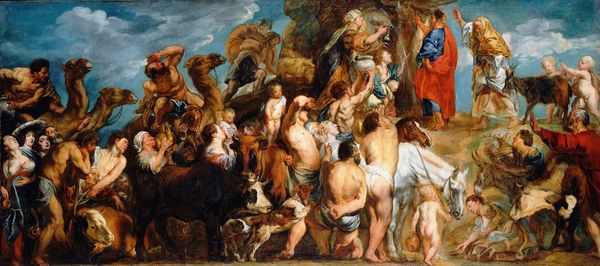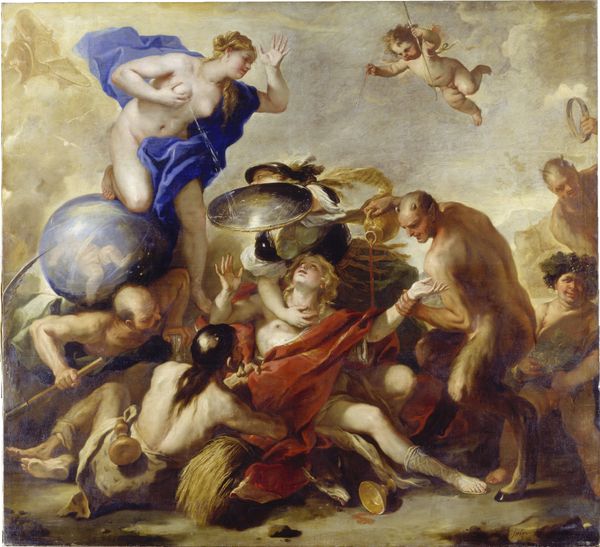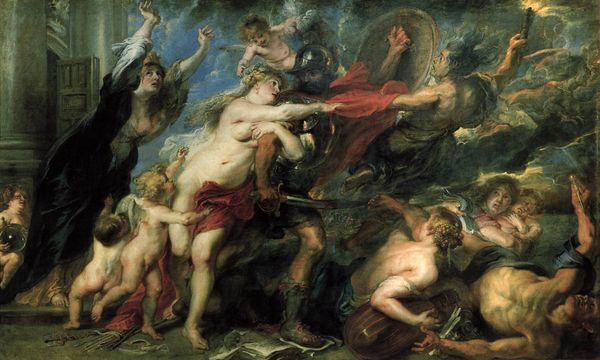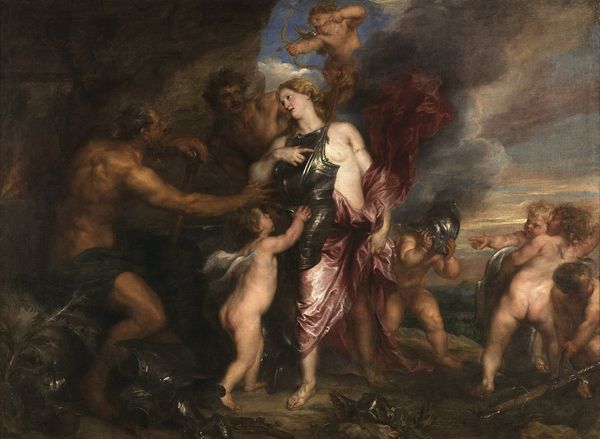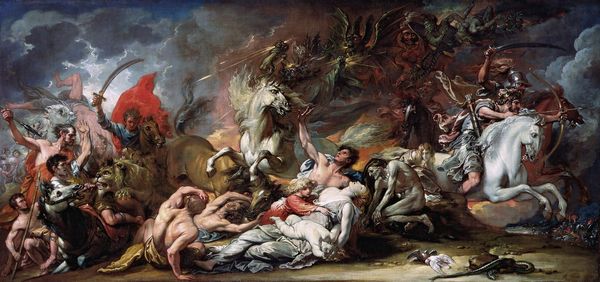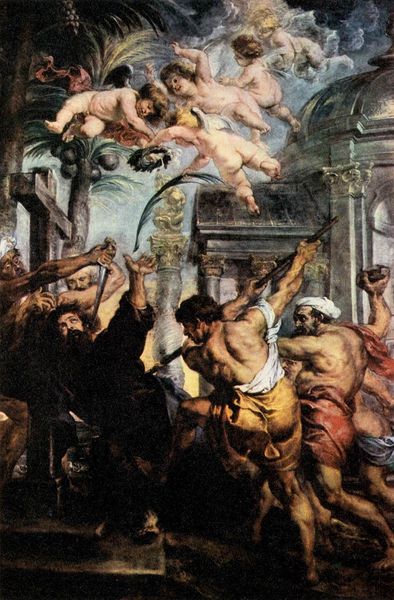
painting, oil-paint
#
baroque
#
painting
#
oil-paint
#
figuration
#
oil painting
#
flemish
#
mythology
#
charcoal
Dimensions: 99.5 x 139 cm
Copyright: Public domain
Editor: So, this is Peter Paul Rubens' "Perseus and Andromeda" from 1621, done in oil on canvas, currently housed in the Hermitage. It strikes me as incredibly theatrical, almost staged, with everyone reacting dramatically. What do you see in this piece, beyond the immediate narrative? Curator: I see a potent allegory steeped in the social and political realities of Rubens’ time. The myth of Perseus rescuing Andromeda, seemingly a straightforward heroic narrative, becomes a lens through which to examine power dynamics and female agency. Notice how Andromeda is presented, chained and vulnerable – a potent symbol of societal constraints imposed upon women. Editor: Yes, she seems almost passive, doesn’t she? Curator: Exactly. Now, think about the context: the Baroque era, with its emphasis on grandeur and spectacle, but also strict social hierarchies. Rubens, a diplomat as well as an artist, was keenly aware of these structures. Is Perseus merely a rescuer, or does his intervention reinforce a patriarchal order? Consider the implications of a man saving a woman as the core theme, perpetuating notions of female dependence. Editor: That’s a compelling perspective. It makes me question the whole “damsel in distress” trope. Were women, especially artists at that time, grappling with these kinds of representations? Curator: Absolutely! This is where contemporary theory helps us to understand these complex layers. While seemingly celebrating heroism, the painting simultaneously reveals underlying societal anxieties about gender roles and power. Also, what about the figures accompanying Perseus? Editor: Those putti, yes...the whole composition is overwhelmingly loaded with symbolisms! I appreciate that the mythological setting can allow to deliver these concepts in the work. Curator: Exactly. What appears to be just a mythological scene can be a window into how women’s bodies have historically been put on display to embody virtues and values, not just physically but how they embody an ideology. Rubens shows the story in ways that become quite revealing about cultural gender norms, and it prompts to be inquisitive about these norms and systems in our own cultures. Editor: It's amazing how much richer the piece becomes when we view it through this lens. Thanks, I hadn't considered these broader implications before!
Comments
No comments
Be the first to comment and join the conversation on the ultimate creative platform.
